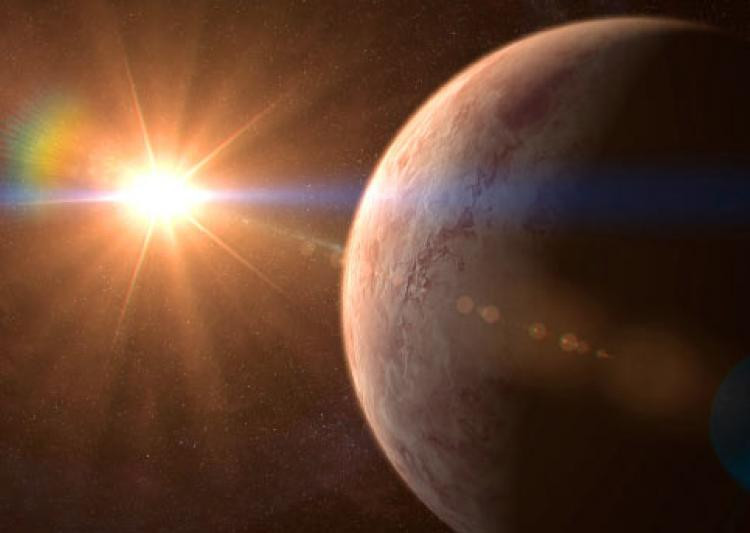'Super Earth' is 32 light-years away from the solar system
Spanish scientists discovered that the new "super-Earth" is located 32 light-years from the solar system and 5.4 times more massive than the Earth.
Astronomers from the Astrophysics Institute of the Canary Islands, Spain, have published a study of a new " super-Earth" located 32 light-years away from the solar system, IFL Science on November 18. believe. "Super-Earth" is the name for rocky planets outside the solar system , many times larger than Earth.
The new planet is named GJ 536 b, orbiting around the red dwarf GJ 536 . It estimates that the mass is 5.4 times larger than Earth and the orbital cycle does not exceed 9 days.

"Super Earth"GJ 536 b is 5.4 times larger than Earth.(Photo: Gabriel Pérez).
The environment on GJ 536 b is difficult to live . However, the team hopes to find another planet that is related to it could be more life-friendly.
"The rocky planets are often found in groups, especially around stars like GJ 536. We believe it is possible to find other small-mass planets in the star's more orbit, with orbital cycles about 100 days to a few years, " said Alejandro Suárez Mascareño, the study's lead author.
Astronomers hope to discover a system similar to Trappist 1 , ie a red dwarf with three rocky planets in the region that can live around it. GJ 536 b is not in this area but other planets that are related to it are possible.
The GJ 536 red dwarf also has a magnetic cycle similar to the Sun, even for only about three years, instead of the Sun's 11-year cycle. These characteristics make GJ 536 b an attractive research object.
"GJ 536 b orbits around GJ 536, a smaller and cooler star than the Sun. However, GJ 536 is close and bright enough, as can be observed from both the northern and southern hemispheres. This makes it a notable object for future high-stability spectroscopes and especially in the search for other stone planets in the star's habitable zone, " Jonay Isaí González, co-author fake research, commented.
Scientists are planning to study the spectral change in star radiation when the GJ 536 "super-Earth" b passes through it, thereby understanding the planet's atmosphere.
- Finding 'Super Earth' is just 6 light years away from us
- The discovery of 'super-earth' can exist life
- Discovered 'super-Saturn' outside the Solar System
- New discovery of the solar system like the solar system
- The Earth will suffer
- Detection of super Earth with water atmosphere
- Discovering super Earth could be very close to us
- How long does it take to get up to 7 life-capable planets - has Trappist-1 been discovered?
- The discovery of 'super-Earth' can bring life near the solar system
- The distance from the Earth to the celestial bodies in the solar system
- The giant pink sun on 7 planets resembles Earth
- 'Super Earth' may exist near the solar system
 Van Allen's belt and evidence that the Apollo 11 mission to the Moon was myth
Van Allen's belt and evidence that the Apollo 11 mission to the Moon was myth The levels of civilization in the universe (Kardashev scale)
The levels of civilization in the universe (Kardashev scale) Today Mars, the sun and the Earth are aligned
Today Mars, the sun and the Earth are aligned The Amazon owner announced a secret plan to build a space base for thousands of people
The Amazon owner announced a secret plan to build a space base for thousands of people